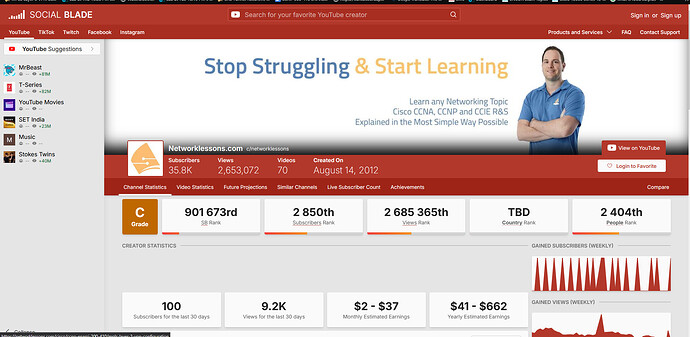Hello David
First of all, let’s address the question about SocialBlade. Yes, YouTube provides a public API that allows services like SocialBlade to access platform data programmatically.
YouTube’s API is a controlled interface between its internal database and external applications. SocialBlade sends structured requests to specific API endpoints. For example, to fetch subscriber counts or video metrics, SocialBlade might use something like this:
GET https://www.googleapis.com/youtube/v3/channels?part=statistics&id=CHANNEL_ID&key=API_KEY
This returns data in standardized formats like JSON, which SocialBlade then parses for processing and display. This allows YouTube to safely provide the information it chooses to third parties like SocialBlade, in a structured and controlled manner without the need to allow them to interact with internal databases and systems.
Yes, that’s exactly it. Of course, this is simply one example of what an API can do. More generally speaking, an API is a well defined interface through which programs/software can gain access programmatically to interact with that system in a controlled and structured manner.
Yes. In the example of SocialBlade, the purpose of the API is to simply extract information in a particular way. But APIs can be configured to provide deeper interaction between the system providing the API and the system using the API. For example, VoIP telephony systems that I’ve worked with provide predefined APIs that allow deep interaction with Customer Relationship Management (CRM) systems allowing the direct correlation of phone numbers with customer names. Similarly, APIs on network devices like routers and switches and firewalls can provide anything from extracting information, to full control and configuration using network management systems. So in the case of SDN, not only can you extract information, but you can have full control of the device. Not through CLI, but through a network management and controller system like Cisco DNA Center, which uses APIs extensively.
So an API is a programmatic interface through which another software program/process can interact with the system in question. The extent of interaction depends upon the configuration of the API itself. Does that clarify things a bit?
I hope this has been helpful!
Laz
